Washing machine filter: signs of clogging, cleaning recommendations
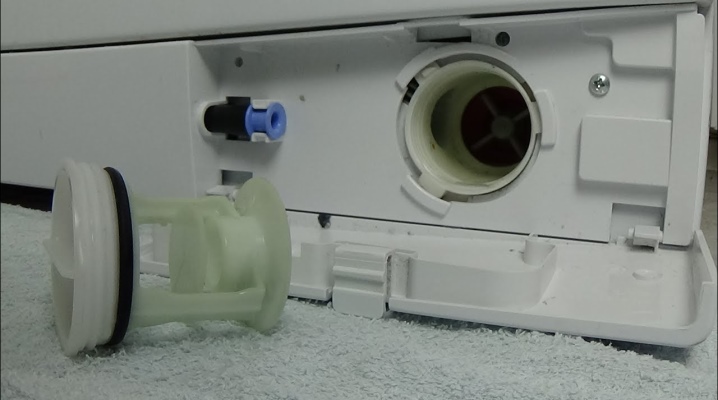
Filters are an important part of the washing machine. They protect the parts of the unit from the negative effects of hard water and mechanical debris, which significantly increases its service life. Periodically, they themselves need preventive measures and cleaning, which are carried out at home.
Untimely maintenance of the filtering equipment negatively affects the operation of the unit, and in more advanced cases, even leads to its shutdown.
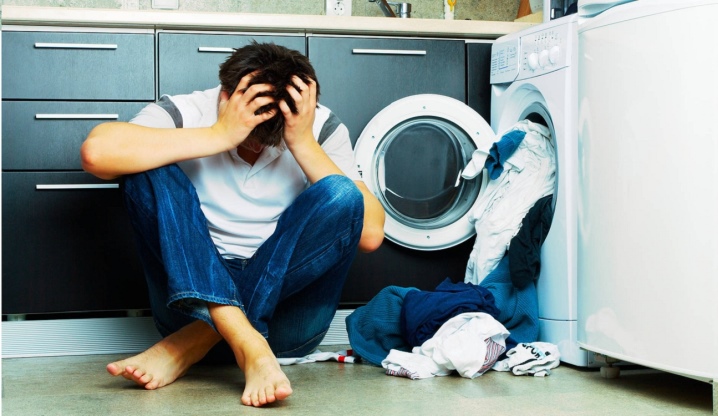
Types and purpose of filters
The need to install filter modules is caused by the specifics of the operation of washing machines, the main duty of which is to clean things from dirt and dust. During the washing process, intensive water pollution occurs, including mechanical debris, which can lead to breakdown of important unit components. From dirty things, not only sand and threads get into the drum of the machine, but also such objects as coins, fasteners, buttons, rhinestones, jewelry and other little things that are often in pockets.
Thanks to the operation of the filtering systems, these objects are captured and remain inside the mesh bag, and it is the responsibility of the consumer to remove them from there on time, thereby preventing the deterioration of the unit's performance.
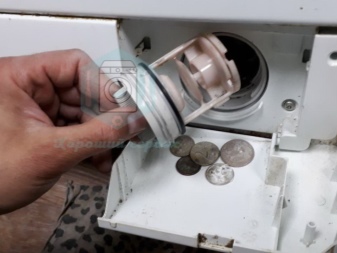
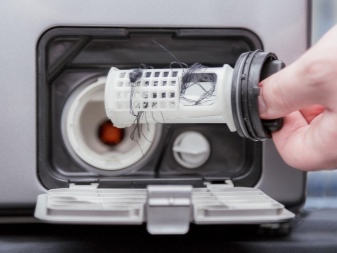
The drain (drainage) filters located in the lower part of the machine are responsible for capturing and retaining mechanical debris, sand and dirt. When they become clogged, the waste liquid cannot fully leave the tank, which leads to a stoppage of washing and provokes the multiplication of pathogenic bacteria and fungus on the inner surfaces of the unit... The latter lead to the formation of mucus and the appearance of an unpleasant odor. After washing in such a machine, the laundry begins to smell musty and requires rewashing.
However, not only contaminated water can cause incorrect operation, and sometimes stop the washing machine. The water coming from the water supply system, which is often not of the best quality, has a huge impact on the efficiency of its work.
In order to avoid the ingress of solid suspensions and rust present in the pipes into the machine's system, filler (inlet) filters are installed in the machines.
Taking into account the specifics of the contamination of the water entering and leaving the unit, the inlet filters become clogged much less often than drainage filters and require cleaning measures a little less often, however, they should not be completely forgotten.
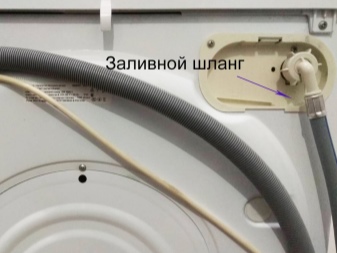
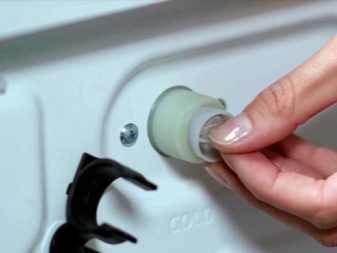
Signs and causes of clogging
A clogged drain (pump) filter can be recognized by a number of signs:
- slowing down or stopping the discharge of the waste liquid from the drum;
- when the "Spin" mode is turned on, the unit turns off;
- the option "Rinse" is not included;
- the machine refuses to work in the "Washing" mode and turns off;
- unpleasant odor from the drum;
- displaying an error code on the screen.
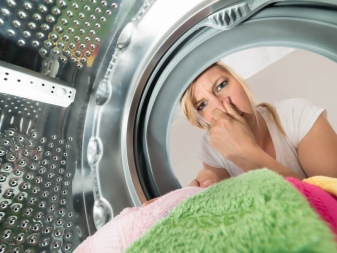
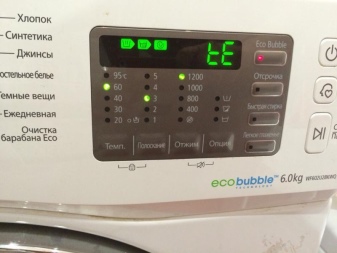
The reason for the clogging of the drain filter is the passage of water through it, contaminated with wool, hair, sand and small debris washed out of clothes during washing.
The bottom filter should be cleaned at least once every 4 months, and if woolen products are washed frequently, once every 1-1.5 months.
If the filler filter is clogged, then the signs of this will be as follows:
- water begins to flow into the tank under a very low pressure;
- washing time increases significantly;
- a hum is heard when filling the tank.
The top filter is clogged due to the poor quality of the tap water, which is saturated with rust flakes, lime and a lot of salt.
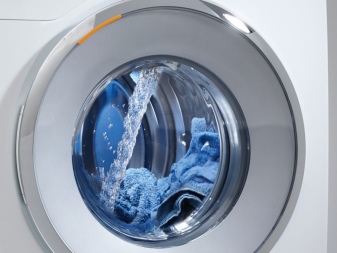
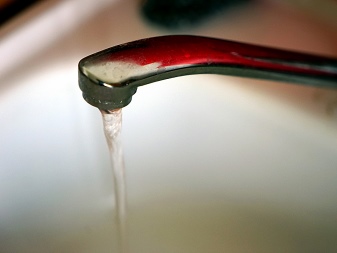
Where is?
In appearance, the drain filter looks like a plug that is screwed into the unit body. The location of the drain filter systems in the washing machine depends on the model and varies.
Below are the aggregates of the most famous companies with an indication of the location of the drain filter.
- In brand models Atlant the filter module is closed by a hatch and is located in the lower right part of the machine.
- In typewriters Candy the filter is also hidden by a miniature hatch, but it is located already on the left side of the front panel in the lower part of it.
- In aggregates Samsung the lower filter is covered with a decorative cover and is located in the lower right corner.
- In typewriters Lg also closed from prying eyes by a hatch and is located at the bottom left.
- In brand models Electrolux, Zanussi, Siemens, Indesit, Bosch, Ariston filter units are also located behind removable covers or decorative hatches. They are located on the lower right side of the bezel.
- In typewriters Whirlpool and on top-loading units, the lower filter is located in the lower left-hand side.


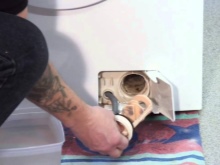
Concerning flooded filters, they are not present in all samples, and in machines of the activator type they are completely absent. In those models in which they are provided for by the design, their location is always the same. The upper modules are located at the junction of the inlet hose screwing, immediately after the water supply valve. In most samples, this is the top of the back of the instrument.
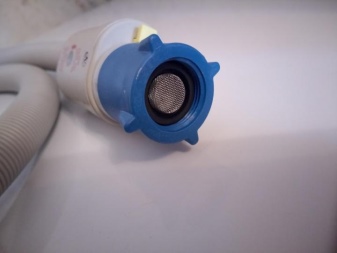

How to get it out?
Before proceeding with cleaning the filter systems, the machine should disconnect from the power supply and shut off the water supply... In order to remove the filler filter, it is necessary to move the machine away from the wall, unscrew the hose and carefully remove the filter element. To do this, you can use thick tweezers or pliers, carefully unscrewing the filter from the slot.
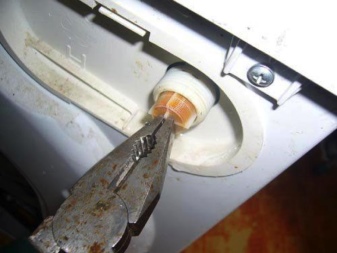
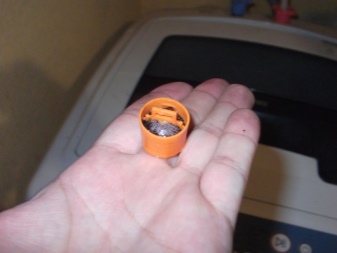
Removing the drain filters does not require the use of auxiliary tools and is done manually. Before you start unscrewing it, spread a rag on the floor under the hatch and set a low dish to collect the flowing water. The drain filter is equipped with a thread, and therefore it is quite easy to unscrew. First, you need to open a hatch or a decorative flap, which are more often fixed with a latch, but in earlier samples it is required to pry them with a thin flat tool - a knife or a screwdriver.
In some cars, the hatch moves to the side or pulls out towards itself.
Then the plug is carefully unscrewed by turning it counterclockwise. In some models, the filter module is additionally fixed with one or two screws. In this case, you will need a screwdriver. With regular maintenance and there are no foreign objects inside, removing the filter is very easy and does not require much effort.


However, it sometimes happens that it is not possible to unscrew the filter manually. This is due to infrequent maintenance and a large accumulation of debris in the mesh. In such cases, put the washing machine on its side, unscrew the fasteners securing the bottom panel, remove the cover, remove the pump and try to pull out the filter. If the attempt is unsuccessful, then the drain system is removed completely and only then the filter is removed.
Sometimes it happens that when the filter unit is removed, the rubber of the plug is damaged. That's why if, after cleaning the filter, it was noticed that the drain hose leaks a little, then the filter module is removed again and the failed gasket is replaced... If, after replacing the rubber band, the machine still leaks, then the matter is most likely in the damaged thread. In such cases, the filter must be completely changed or contact a service center.

How to clean?
After both filter modules have been removed, you can start cleaning them. Below are the rules for servicing the drain and filler filters, as well as the sequence of work.
- So, cleaning the filler filter as follows: the filter mesh is carefully examined for rust and limescale, and then washed under a stream of warm water using an old toothbrush and laundry soap. With a large accumulation of rust, the filter is soaked in a citric acid solution, stirring 50-60 g of the substance in 1 liter of water. After 10 minutes, it is removed, the contaminated areas are thoroughly cleaned with a toothbrush and washed under running water. Then it is dried well and installed in its original place.
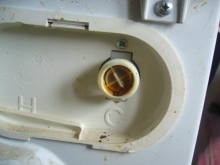
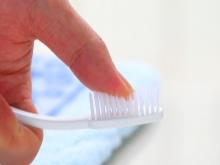
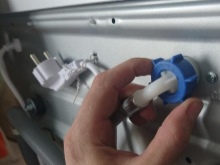
- Before cleaning the drain filter, it is necessary to clean the hole in which it was installed from dirt. To do this, they take a lantern, illuminate the passage with it and extract mucus, dirt and small debris from it. Then, the remnants of curled hair, fabric fibers, wool and threads are removed from the filter, after which they are well washed under a warm stream.
If there are traces of limescale inside the filter element, then it is soaked in a citric acid solution as described above.
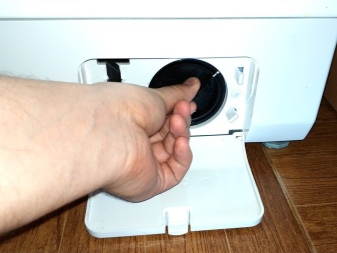
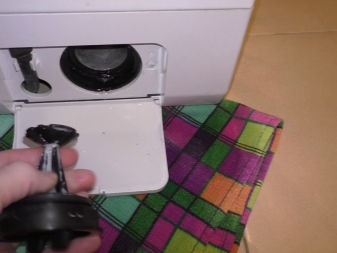
The drain filter is often cleaned through a pump... To do this, remove the clamps that secure the drain hose, then remove the pump together with the snail and clean the filter through the drain hose hole. The cleaned filter is dried at room temperature and replaced.
Cleaning products
In order for the cleaning of filter systems to be more effective, it is recommended to use special formulations that you can prepare yourself or purchase ready-made.


Household chemicals
From ready-made care products for washing machine filters Compositions such as Cillit, Domestos, Antinakipin and Alfagon have proven themselves well... They effectively fight scale, rust and limescale, and prevent their appearance.
You can use Pemolux to soak the filter modules, and Comet to remove mold and mildew.
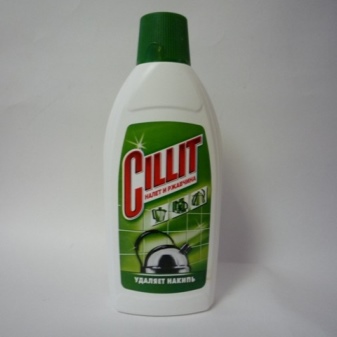
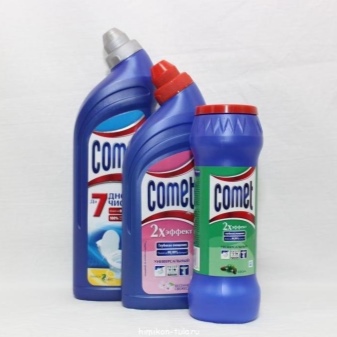
Folk remedies
In addition to the already known citric acid, you can clean the filters using such improvised tools as soda and vinegar. To do this, pour 50 g of baking soda with a liter of water, mix and place the filters in the resulting composition for 25 minutes. Then they are cleaned with a sponge and rinsed under the tap. Or take 1 tbsp. l. vinegar, dilute it in a liter of water and place a filter there for 6-8 hours.
If it is necessary to clean not only the filters, but also the powder tray, as well as the heating element, then they are poured into the container 1 sachet of citric acid and drive the machine at a temperature of 60 degrees.

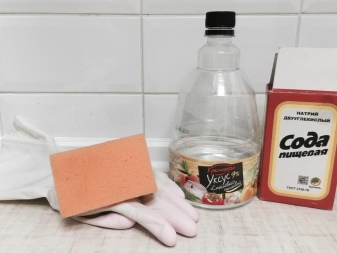
Expert advice
In order for the machine to serve as long as possible, it must be properly and promptly looked after, listening to the recommendations of experts.
- Before you start washing, you need to check the pockets and remove coins, keys and other small items from them.
- It is recommended to turn clothes decorated with beads, beads, rhinestones, rivets and sequins inside out before washing.
- After washing items such as pillows, blankets and jackets filled with down and feathers, you should immediately thoroughly clean the valve, and wash clothes that generate a large amount of threads, lint and fabric fibers in special bags.
- To clean the filters from mucus and sticky dirt, it is good to use toothbrushes, and to clean the holes in the mesh - toothpicks.
- For weekly washing in summer and autumn-spring, the filters should be cleaned every 4 months. If the machine is used daily and washes, for example, overalls, then the filters should be cleaned monthly.
In winter, when a large number of woolen items are washed, the filters are cleaned from wool and lint once every 2 months.
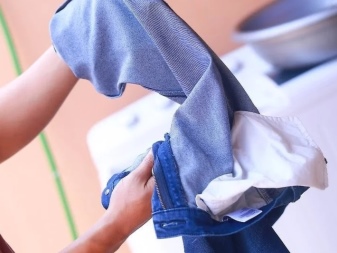
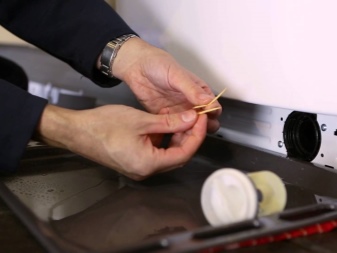
For information on how to clean the filter in a washing machine, see the next video.













The comment was sent successfully.